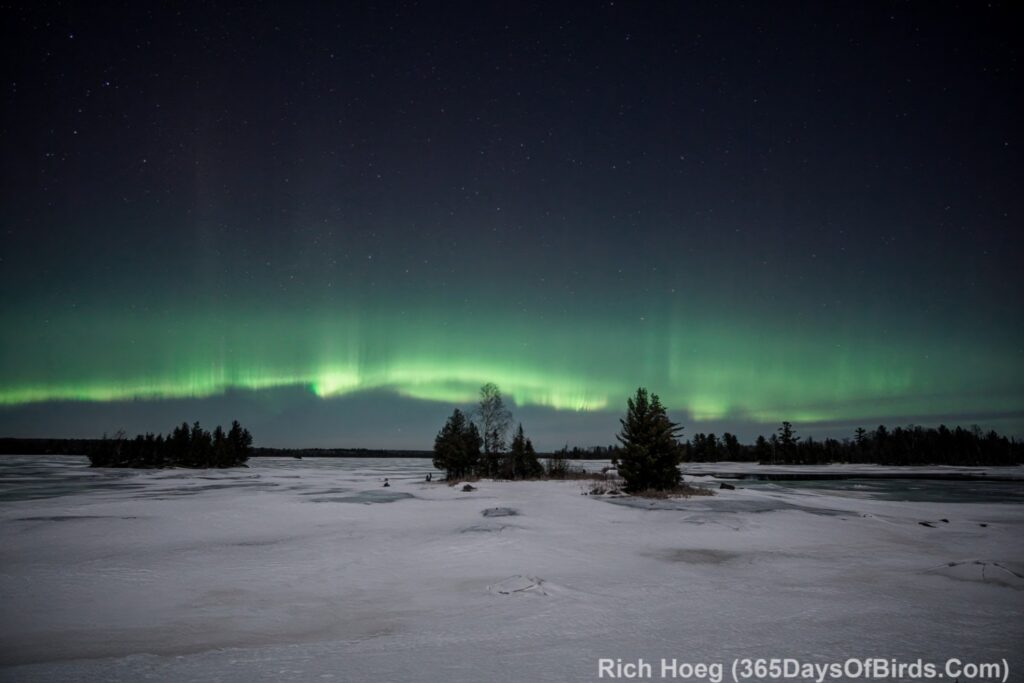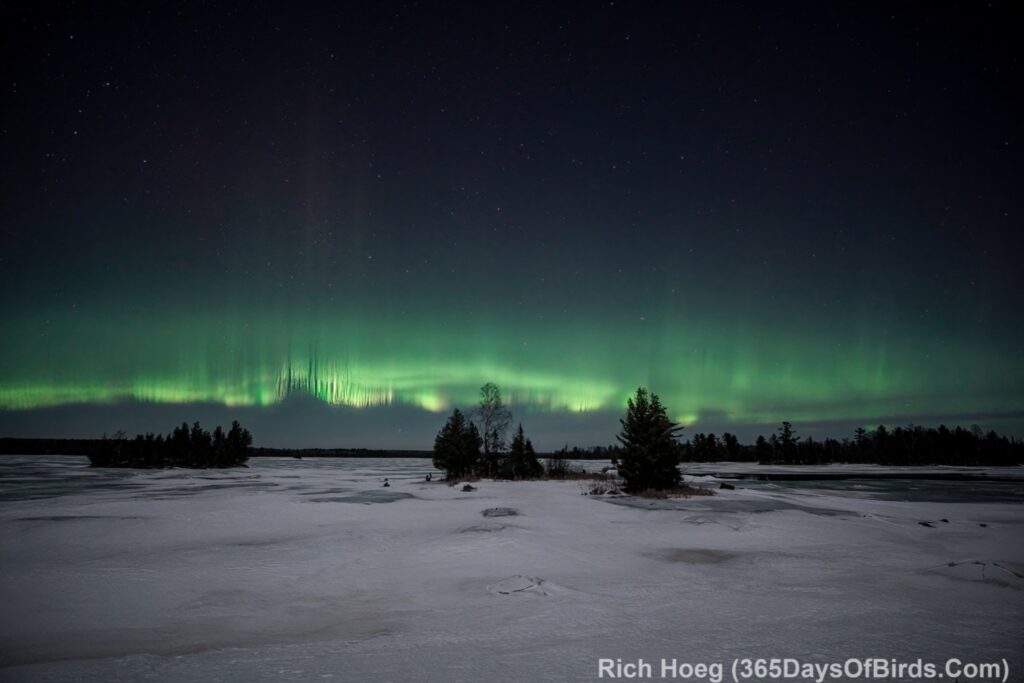Sparky, who is both a friend and and the Executive Director of the Friends of Sax-Zim Bog visited my Greenwood Creek Bird Feeders a few days ago. Sparky has has a video series named “Shooting with Sparky”. While a large number of his videos focus upon Minnesota birding, he has both visited and documented birding excursions from the Rio Grande River to Hudson’s Bay. (Links to Sparky’s Blog and YouTube Channel)
His latest effort was a late winter birding trip into the Superior National Forest, which included a stop at my very remote feeders. Folks should watch his latest video (video link for email subscribers)
While I didn’t cross paths with Sparky at my feeders, I’ve also went up to Greenwood a few days ago. While it may seem like Spring because of the warm weather in the rest of Minnesota, deep in the boreal forest of northeastern Minnesota winter still rules! Here are some photographs I took of Common Redpolls. While my feeders were only a few feet away from these small finches which were working their way back north into Canada, the birds chose ignore my feeders and feast upon natural food that was becoming plentiful on the forest floor due to melting snow.
Common Redpolls (last image is a female)
Red-Breasted Nuthatch
In closing I think most folks know I have been a volunteer at Sax-Zim Bog for over ten years. While many people may think of the Bog only as a birding area, the primary focus of the Friends organization has been habitat preservation and research. Under Sparky’s leadership the Friends organization has purchased and saved for future generations thousands of acres of critical habitat. The research insures we understand how to keep nature available for our children.
On a lighter note, I have actually known Sparky’s family for much longer than the time I have been a volunteer at Sax-Zim Bog. I first met Sparky’s parents through our mutual Lutheran church. His parents made sure I did not “mess up” when I volunteered / worked at our annual lutefisk dinner!!! In addition Sparky’s Mom, Connie, always made certain my children got first chance to watch any new VeggieTales video that arrived in the church library. Uff Dah … who needs birds to define a friendship when one already has a relationship built upon children’s videos and lutefisk?!















